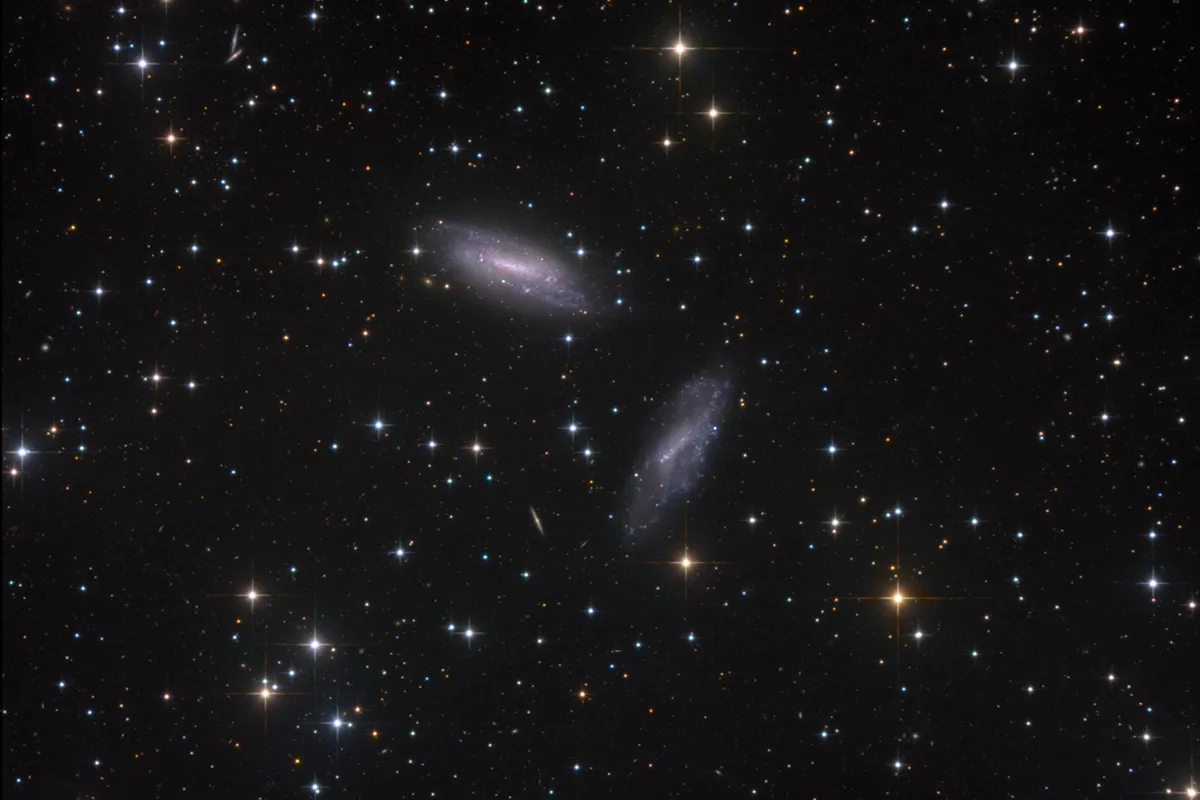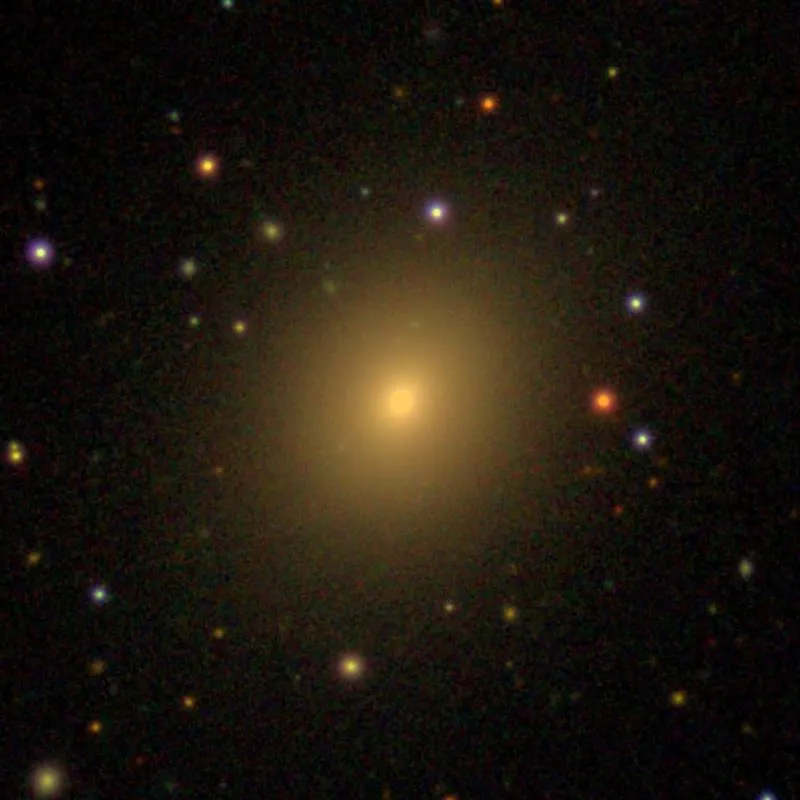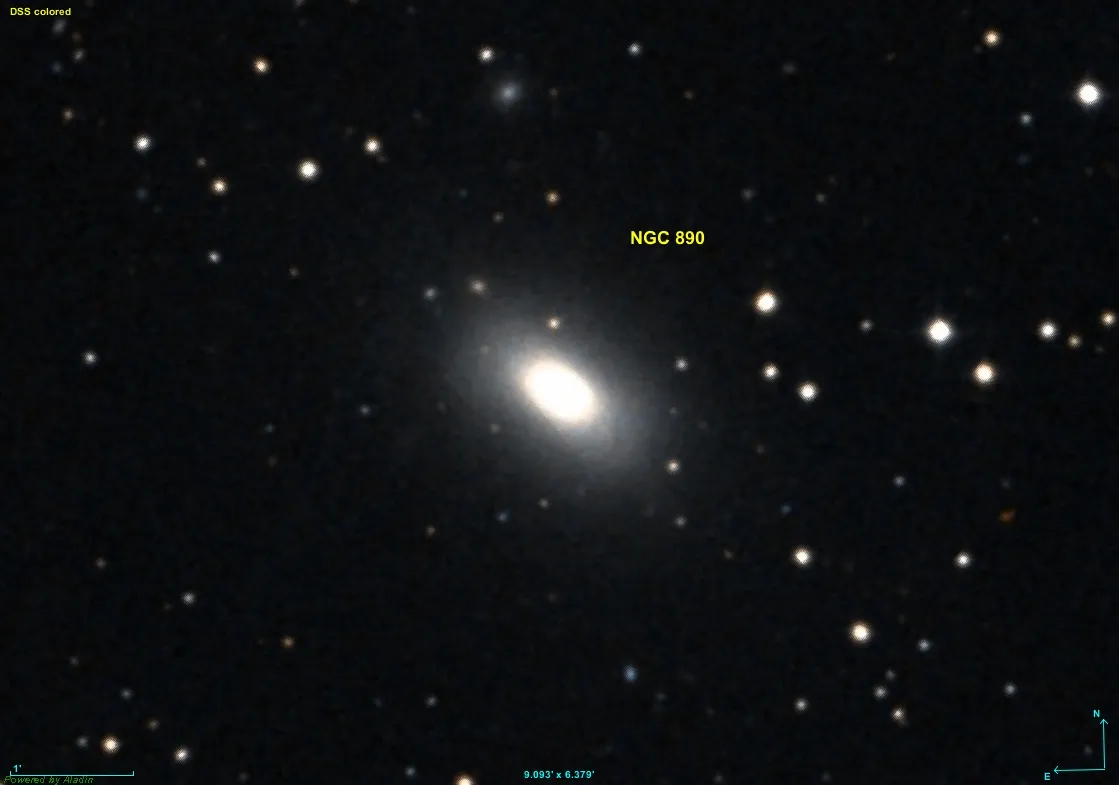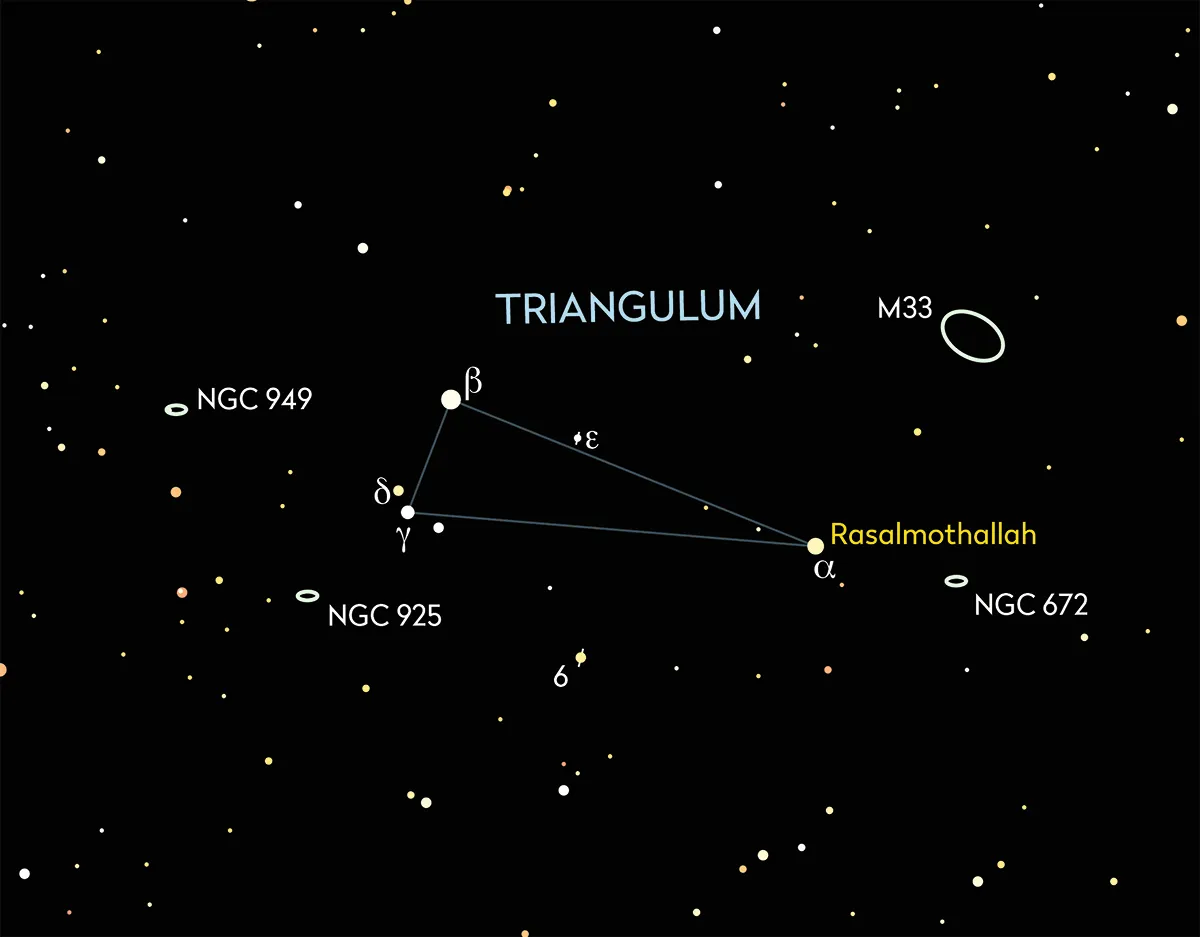Some constellations are big, bold and easily recognisable – like Orion, the Hunter – and these take pride of place for stargazers.
Other, smaller patterns get forgotten. One such constellation is Triangulum, the Triangle. It’s no surprise to discover that Triangulum is made of three stars.
It is a curious constellation, because it could be argued that any three stars form a triangle, unless they’re in a line!

There’s a southern equivalent too, Triangulum Australe, the Southern Triangle. In mythology the northern version represents the island of Sicily, but sadly the southern variant has no mythology of its own.
While the stars of Triangulum are by no means the brightest stars in the sky, the constellation they make has a very long history. Triangulum was known at the time of the ancient Greeks over 2,000 years ago.
The name of their chief god, Zeus, begins with the letter delta (∆) and this could well be the idea behind the formation of this constellation.
It clearly made the same shape, if a little squashed, in the sky.
How to find the Triangulum constellation

The Triangulum constellation - and the famous Triangulum Galaxy (M33) that resides within the constellation - are relatively easy to find because they are surrounded by other famous constellations, asterisms and deep-sky objects.
One way of finding the Triangulum Galaxy would be to use the Great Square of Pegasus as a starting-off point to star-hop to the Andromeda Galaxy.
You can then use stars Mirach and Hamal to hop to the galaxy. From there, the Triangulum constellation itself should be easy to spot.
Find out more about this in our guide to star hops that help you navigate the night sky.
Once you've found Triangulum, get out your telescope and observe some other deep-sky targets in the region.
6 deep-sky targets in Triangulum
Get to know the Triangulum constellation better with our deep-sky tour, taking in 6 beautiful objects to observe through a telescope. Download a PDF chart to help you locate the objects.
1 – M33

M33 - the Triangulum Galaxy - is a magnificent, albeit faint spiral galaxy in Triangulum. Although listed at mag. +5.7 it’s hard to see. M33 is face-on to us and with an apparent size of 62 x 39 arcminutes, its surface brightness is low.
Locate it by extending the line from M31, the Andromeda Galaxy, through Mirach (Beta (β) Andromedae) for the same distance again (see diagram above).
A small scope under dark skies will show the central core as a misty fuzzball. A 250mm scope shows a mottled patchwork of dim light surrounding the core.
2 – Collinder 21
Our next target has a charm all its own. To locate it, start at Rasalmothallah (Alpha (α) Trianguli). Head 2.4˚ south and 0.7˚ west, where you’ll find a mag. +8.1 star with a curve of 10th magnitude stars to its north.
This is the cluster Collinder 21. The semi-circle has a diameter of 6 arcminutes. A small scope reveals six stars here, a 250mm instrument increasing the count to 14.
3 – NGC 672 (and IC 1727)

Heading 0.6˚ northwest from the brightest star in Collinder 21 brings you to NGC 672, a spiral galaxy located 23.4 million lightyears away.
A 150mm scope reveals the object to be elongated, with a hint of brightness at its centre. With a visual magnitude of +10.8 and a size 6.6 x 2.7 arcminutes, like M33, NGC 672 suffers from low surface brightness.
This is an interacting galaxy, deformed by gravitational forces inflicted by IC 1727, a mag. +12.1 irregular galaxy located 6 arcminutes to the west. A 250mm instrument reveals NGC 672 to be 4 arcminutes long and 1.5 arcminutes wide.
4 – NGC 777

We head inside the pointed isosceles triangle that is Triangulum for our next target, the 12th magnitude elliptical galaxy NGC 777. It’s visible in a 150mm instrument, despite its dim magnitude, but again dark skies are recommended.
To locate it, imagine the middle line of the Triangulum triangle starting at Rasalmothallah. Head 2.4˚ along this line from Rasalmothallah where you’ll find a mag. +8.7 star with a mag. +9.3 star 6.5 arcminutes to the west: TYC2308-878-1 and TYC2308-585-1 respectively. NGC 777 forms a right-angled triangle with these stars, TYC2308-585-1 at the right angle.
The galaxy lies 4.7 arcminutes from TYC2308-585-1 in a direction away from Rasalmothallah. It’s dim in a 150mm instrument, a misty patch with a star-like nucleus; and is 1 arcminute across in a 250mm scope.
5 – NGC 784

For our penultimate target, the virtually edge-on barred spiral galaxy NGC 784, head 2.3˚ southeast of Rasalmothallah to locate mag. +6.6 HIP 9493. You’ll find NGC 784 28 arcminutes to the north of this star. Again, this galaxy is listed at a reasonably bright mag. +11.8 but suffers from low surface brightness.
A 150mm scope will show it as a faint scratch of light orientated north-south. A large scope is necessary to do it justice, the galaxy appearing 6 arcminutes long and nearly an arcminute wide through a 300mm instrument.
The mistiness of the galaxy’s elongated halo surrounds a brighter inner region roughly 1.5 arcminutes in length. Through larger instruments, there’s a definite mottled texture across the galaxy’s length.
6 – NGC 890

Our final target is NGC 890, an 11th magnitude lenticular galaxy sitting 1.1˚ east-southeast of Gamma (γ) Trianguli in a barren area of sky.
The best strategy to locate it is to use the short edge of Triangulum formed by drawing a line from Beta (β) through Gamma Trianguli. Keep this line going for about half the distance again and you’ll be in the right area. Listed with an integrated magnitude of +11.1, a 150mm instrument sees it as a slightly elongated glow.
A 250mm scope reveals an object approaching 2 arcminutes in length and 1 arcminute wide under dark-sky conditions.
Triangulum Majus and Minus
Back in the 17th century, astronomer Johannes Hevelius split up the Triangulum constellation into two tinier ones: Triangulum Majus and Minus.
The little triangle that forms Minus is made up of three 5th magnitude stars that Hevelius was the first to catalogue: 6, 10 and 12 Trianguli.
The two triangles were eventually reunited, but two triangles are both nice objects to observe through binoculars.
Observe star Rasalmothallah at Triangulum’s point

Rasalmothallah (Alpha (α) Tranguli) marks the western end of Triangulum, the Triangle.
The ‘Rasal’ portion of the name may sound familiar. The two most common examples of its use are in the star names Rasalgethi and Rasalhague, two stars representing the heads of Hercules and Ophiuchus respectively, so you may have guessed that this means ‘head’.
The name Rasalmothallah means ‘head of the triangle’, something echoed by its now defunct name Caput Trianguli.
Caput means ‘head’ in Latin, another example being Serpens Caput, the Serpent’s Head.
It’s worth noting that the International Astronomical Union Working Group on Star Names (WGSN) set up in 2016, approved the revised name Mothallah for Alpha Trianguli – robbing the triangle of its head!
The star itself shines at mag. +3.4, lies at a distance of 63.3 lightyears from the Sun and is a spectroscopic binary.The components rotate around their common centre of mass once every 1.736 days.
Analysis gives the system a spectral classification ranging from F5 III to F6 IV.
F5-F6 puts it in the middle of the yellow-white colour temperature range of 5,720–7,220˚C. III-IV indicates a giant or sub-giant.
The primary rotates quickly at 81.6 km/s and its shape is most likely to be ellipsoidal as a consequence.
The gap between both stars is likely to be rather small, in the order of 0.04 AU.
This guide originally appeared in the October and November 2021 issues of BBC Sky at Night Magazine.

